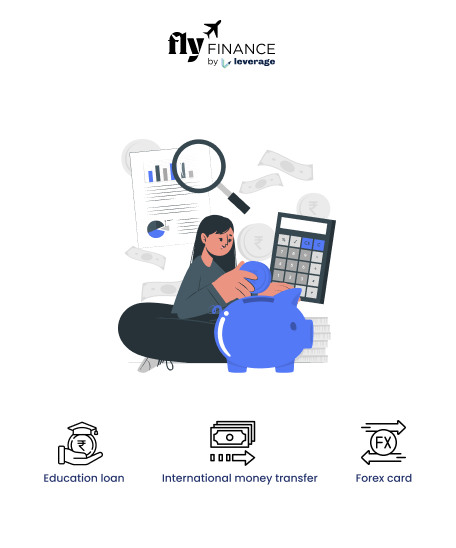International money transfer has become quite easy thanks to the availability of electronic modes of payment. EFT or Electronic Funds Transfer refers to the entire category of electronic payments like NEFT, ACH/ECS, Wire Transfer etc. Now you must be thinking that if wire transfer is a type of EFT then why we are differentiating between them, isn’t it? Here is the answer.
Among all the other EFT modes of payment, international wire transfer is the most efficient, safe and fastest way of transferring funds abroad. Let’s check the major differences between other EFTs and Wire Transfers.
Table of contents
What is a Wire Transfer?
Wire transfer is an online mode of electronic funds transfer (EFT) from one person or entity to another. All the wire transfer is administered by the concerned banks and the intermediary involved, like SWIFT. International wire transfers are the fastest mode of electronic transfer and is often used for large fund transfers like tuition fee, accommodation cost etc. Check some of the major features of wire transfer below:
- International wire transfers are faster and more certain than other modes of EFTs. It ensures that you receive the funds within 1-2 business days.
- Wire transfers allow you to send money directly to the recipient’s foreign bank account avoiding the involvement of intermediate banks which reduces the chance of delays or intermediary fees.
- With wire transfers, you have more control over the currency conversion process which can help you to secure lower exchange rates by using a foreign exchange service provider.
Also Read: Do you know how to make an international transaction? Check out this blog on things to consider while transferring money abroad
Understanding Electronic Funds Transfer (EFT)
Electronic Funds Transfer or EFT is a common method for transferring funds electronically. EFT is mostly used for domestic transactions like deposit of paychecks, scheduled monthly debits like EMI etc. When it comes to Indian students studying abroad, EFT is primarily associated with online banking services provided by Indian banks. Check some key aspects of EFT:
- EFTs are generally more cost-effective than bank wire transfers and they can be initiated from the comfort of your home or a local branch of your bank.
- EFT transactions usually take time to complete due to the methods in which the bank operates the payment. For example, when you pay your credit card bill through net banking, it usually takes 3-4 days to reflect. However, some banks process the payment quickly.
- EFTs usually involve currency conversion at the receiving bank, which may result in high exchange rates.
Also Read: Have you checked the details of Fidelity Bank for money transfers? Check this blog on Fidelity Bank International Money Transfer
Major Differences between EFT and Bank Wire Transfer
While Electronic Funds Transfers refer to all methods of electronic transfer, bank wire transfer is one of them. The major difference between the wire transfer and other modes of transfer is that wire transfer is the fastest mode of electronic funds transfer. However, there are some more differences based on the transaction methods and charges. Let’s check the major differences between EFT and bank wire transfer:
| Categories | EFT | Bank Wire Transfer |
| Speed | Electronic Funds Transfer are usually slow and can take up to 2-4 business days to reflect the payment | Wire Transfer is the fastest mode of electronic fund transfer and usually takes around 24 hours |
| Charges | Several modes of EFTs attracts very low charge and for domestic transactions, it can even cost zero. | Since wire transfer involves banks and intermediaries (in some cases) and it is the fastest mode, it attracts a high transaction cost as compared to other modes. |
| Safety | ETFs are considered safe as banks handle them. Also, there are ways to reverse a transaction if it is done wrongly. | Wire transfers are also safe and secure but transactions once done cannot be reversed under any circumstances. |
| Exchange Rate | In cases of international transactions bank transfer usually attracts favourable exchange rates. | Wire transfers attract a high exchange rate markup. |
| Convenience | EFTs can be initiated even sitting at your home or a local branch of your Indian bank. This convenience is especially beneficial for students and their families. | Wire Transfer is less convenient in context to the students and their families. |
FAQs
Wire transfers usually attract high forex markup which makes it a little bit costlier.
Wire transfer is one of the fastest modes of international fund transfer. It is completely safe and secure and you can easily transfer large amounts of money.
Both are electronic modes of fund transfer but wire transfers are mostly used for international fund transfers while ACH or ECS is convenient for domestic money transfers. Also, ACH takes more time to complete a transaction while wire transfer is fast and efficient.
When making your decision, consider factors like the transfer amount, the urgency of the transaction, the fees involved, and the exchange rates offered. It’s also advisable to consult your bank and explore international money transfer services to find the best solution that suits your financial needs while studying abroad.
To know more about the loan application process, the best international bank accounts for students, forex and banking experience for global students or international money transfers, reach out to our experts at 1800572126 to help ease your study abroad experience.
Follow Us on Social Media





























